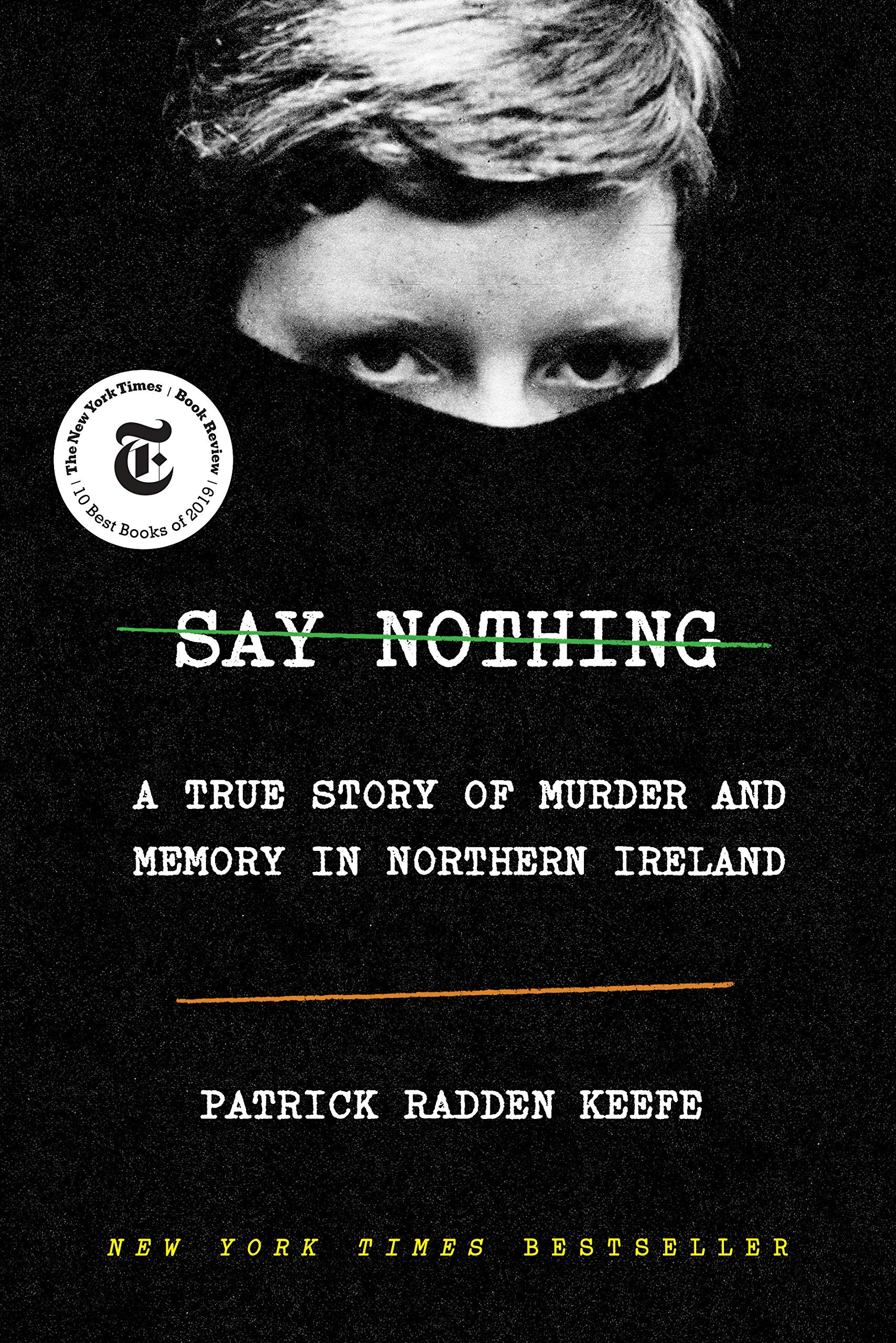
Armchair travel around the world!
Start your reading adventures with our FREE Reading Atlas.

- Around the World in 14 Books
- 7 Thrilling Book Series
- 6 Audiobooks That Are Like Theater For Your Ears



This stunning nonfiction account of The Troubles (464 pages) was published in February of 2019 by Doubleday. The book takes you to 1970s Northern Ireland. David read Say Nothing and loved it; it wouldn't be on our site if he didn't recommend it.
Bookshop.org is an online bookstore with a mission to financially support independent bookstores and give back to the book community.

To understand Ireland – beyond its convivial pub life, lilting language, and literary tradition — you need to understand The Troubles. For the thirty years between 1968 and 1998, Belfast was the epicenter of a violent conflict that radiated throughout Northern Ireland, the UK, and across the Atlantic.
At its heart, this is the tale of Jean McConville, a 38-year-old mother of ten, who was dragged from her home in Belfast in 1972. Masked intruders ripped her away from her children, and she was never seen again. Her crime: She was a Protestant who married a Catholic and was suspected of being an informant.
New Yorker staff writer Patrick Radden Keefe transports us directly to 1970s Belfast and does the hard work of telling a larger story by focusing on this one event: who was there, what happened, and why. The story unfolds like a novel with real-life figures as its characters. We follow along as mild mischief-makers evolve into full-blown terrorists (or revolutionaries, depending on your point of view) who keep notes in their diaries about car bombs and kidnappings.
The basis of this gripping story is the recordings known as The Belfast Project, a collection of interviews with the people who lived through — and were the makers of — The Troubles. These resources helped Keefe write a true-to-life murder mystery with significant political interest, centered on a fascinating and dangerous time in history, using never-before-available source material, straight from the people who were involved. It’s a marvel of journalism and storytelling, and it was awarded the 2019 National Book Critics Circle Award for nonfiction.
Much of the Irish landscape is dominated by peat bogs; the anaerobic and acidic conditions in the densely packed earth mean that the past in Ireland can be subject to macabre resurrection. Peat cutters occasionally churn up ancient mandibles, clavicles, or entire cadavers that have been preserved for millennia. The bodies date as far back as the Bronze Age, and often show signs of ritual sacrifice and violent death. These victims, cast out of their communities and buried, have surfaced vividly intact, from their hair to their leathery skin. The poet Seamus Heaney, who harvested peat as a boy on his family’s farm, once described the bogs of Ireland as ‘a landscape that remembered everything that had happened in and to it.’ — Patrick Radden Keefe
Wanna help us spread the word? If you like this page, please share with your friends.
Strong Sense of Place is a website and podcast dedicated to literary travel and books we love. Reading good books increases empathy. Empathy is good for all of us and the amazing world we inhabit.
Strong Sense of Place is a listener-supported podcast. If you like the work we do, you can help make it happen by joining our Patreon! That'll unlock bonus content for you, too — including Mel's secret book reviews and Dave's behind-the-scenes notes for the latest Two Truths and a Lie.
Join our Substack to get our FREE newsletter with podcast updates and behind-the-scenes info — and join in fun chats about books and travel with other lovely readers.

We'll share enough detail to help you decide if a book is for you, but we'll never ruin plot twists or give away the ending.
Content on this site is ©2026 by Smudge Publishing, unless otherwise noted. Peace be with you, person who reads the small type.